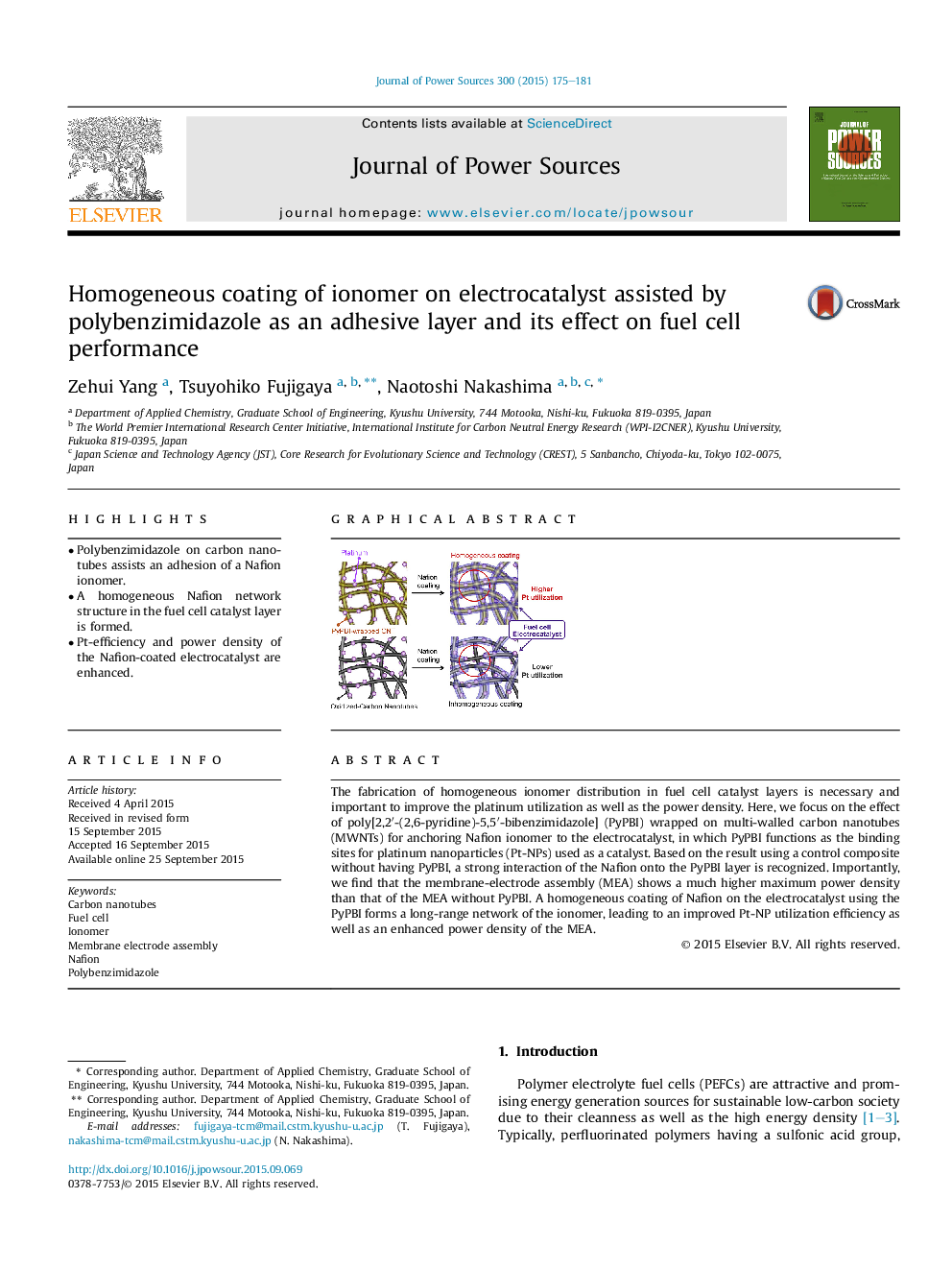| Article ID | Journal | Published Year | Pages | File Type |
|---|---|---|---|---|
| 1285773 | Journal of Power Sources | 2015 | 7 Pages |
•Polybenzimidazole on carbon nanotubes assists an adhesion of a Nafion ionomer.•A homogeneous Nafion network structure in the fuel cell catalyst layer is formed.•Pt-efficiency and power density of the Nafion-coated electrocatalyst are enhanced.
The fabrication of homogeneous ionomer distribution in fuel cell catalyst layers is necessary and important to improve the platinum utilization as well as the power density. Here, we focus on the effect of poly[2,2′-(2,6-pyridine)-5,5′-bibenzimidazole] (PyPBI) wrapped on multi-walled carbon nanotubes (MWNTs) for anchoring Nafion ionomer to the electrocatalyst, in which PyPBI functions as the binding sites for platinum nanoparticles (Pt-NPs) used as a catalyst. Based on the result using a control composite without having PyPBI, a strong interaction of the Nafion onto the PyPBI layer is recognized. Importantly, we find that the membrane-electrode assembly (MEA) shows a much higher maximum power density than that of the MEA without PyPBI. A homogeneous coating of Nafion on the electrocatalyst using the PyPBI forms a long-range network of the ionomer, leading to an improved Pt-NP utilization efficiency as well as an enhanced power density of the MEA.
Graphical abstractFigure optionsDownload full-size imageDownload as PowerPoint slide
